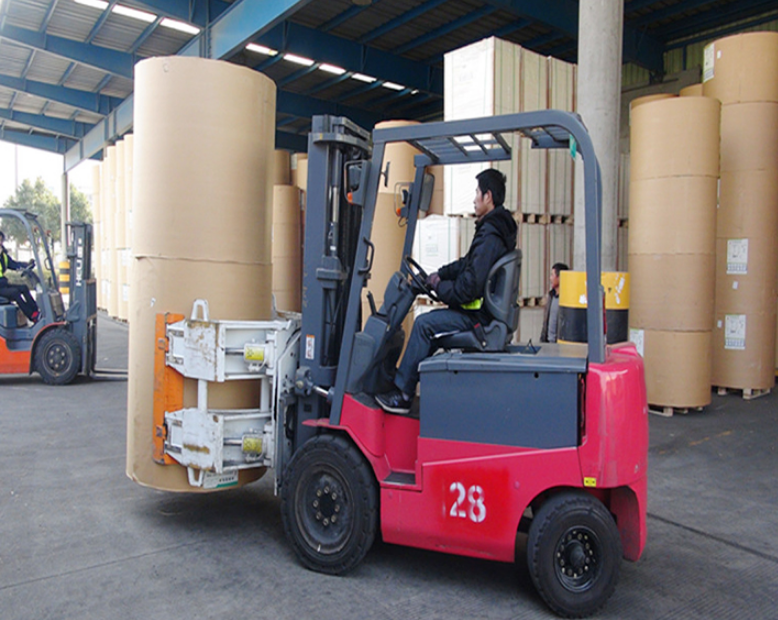Understanding and adhering to forklift attachment safety guidelines are crucial to prevent accidents, injuries, and damage to both the forklift and its load.
Forklifts are indispensable tools in various material handling operations, providing efficient and reliable means of lifting and transporting heavy loads. Forklift attachments further enhance the versatility of these machines, enabling them to handle a wide range of tasks. However, with the use of forklift attachments comes additional safety considerations. In this comprehensive guide, we will discuss essential aspects of forklift attachment safety to ensure safe and effective operation.
Forklift attachment safety is of paramount importance for several reasons:
1. Operator Safety: Ensuring the safety of forklift operators is the top priority. Proper training and adherence to safety protocols help prevent accidents and injuries during attachment use.
2. Load Stability: Forklift attachments can affect the load's stability. Understanding how attachments impact load stability prevents load shifts or tip-overs, ensuring safe transport.
3. Equipment Protection: Proper attachment use and maintenance protect the forklift from damage, increasing its lifespan and reducing repair costs.
4. Productivity and Efficiency: Adhering to safety guidelines enhances the efficiency and productivity of material handling tasks, reducing downtime due to accidents or equipment failures.
Before operating a forklift with attachments, operators must receive comprehensive training and certification. Proper training should cover the safe use, installation, and removal of attachments, as well as load capacity considerations, stability, and potential hazards. Certified operators are better equipped to handle attachments safely and respond effectively in case of emergencies.
Ensure that the forklift and attachment are compatible. Each forklift is designed with specific load capacities and characteristics that must align with the intended attachment's specifications. Using attachments that exceed the forklift's rated capacity can lead to equipment failure and safety hazards.

Before using any attachment, ensure that it is correctly installed and secured according to the manufacturer's guidelines. Regularly inspect attachments for signs of wear, damage, or malfunction. Damaged or worn attachments should be repaired or replaced promptly to maintain safe operation.
Understand how the attachment affects the forklift's load capacity and stability. Attachments can alter the load center, center of gravity, and stability triangle. Operators must be aware of these changes to prevent overloading and maintain proper load stability during transport.
Attachments may obstruct the operator's visibility during operation. Ensure that the operator has a clear line of sight to the load, the surroundings, and the travel path. If necessary, install mirrors or cameras to enhance visibility. Operators should be cautious of low clearances, especially when using high-lifting attachments.
Follow safe operating practices when using attachments:
1. Familiarize with Controls: Operators should know how to operate attachment controls effectively and safely.
2. Slow and Smooth Movements: Avoid sudden or jerky movements to prevent load shifts and maintain stability.
3. Avoid Overloading: Never exceed the forklift's load capacity, considering the attachment's weight.
4. Secure Loads Properly: Ensure loads are centered and secured on the forks before lifting.
5. Stability Checks: Assess load stability before transporting it, especially when using rotating or clamping attachments.
Operators must remain vigilant and aware of their surroundings at all times. Be cautious of pedestrians, obstacles, and other forklifts in the vicinity. Avoid operating the forklift with an elevated load unless necessary for specific tasks.
Perform regular maintenance and inspection of both the forklift and its attachments. Scheduled maintenance ensures that the equipment functions properly and safely. Inspections help identify potential issues before they escalate into safety hazards.
Operators should be well-versed in emergency procedures, such as what to do in case of a tip-over, malfunction, or load shift. Proper training helps operators respond promptly and appropriately in critical situations.
Forklift attachment safety is essential to protect operators, loads, and equipment from potential hazards. Proper training, attachment compatibility, regular inspections, load capacity awareness, and safe operating practices are fundamental to ensuring safe and efficient forklift attachment use. At Longhe, we prioritize safety in all our material handling solutions, including forklift attachments. Our team of experts can assist you in choosing the right attachments for your specific needs, ensuring optimal safety and productivity.
Remember, safety is everyone's responsibility. Following these guidelines and prioritizing safety at all times will result in a safer and more productive work environment for everyone involved.
Previous: Understanding Industrial Couplings: Types, Benefits, and Applications
Next: Troubleshooting Guide for High Pressure Lined Slurry Pump
Copyright:@2020-2021
Comments Please sign in or sign up to post.
0
0 of 500 characters used